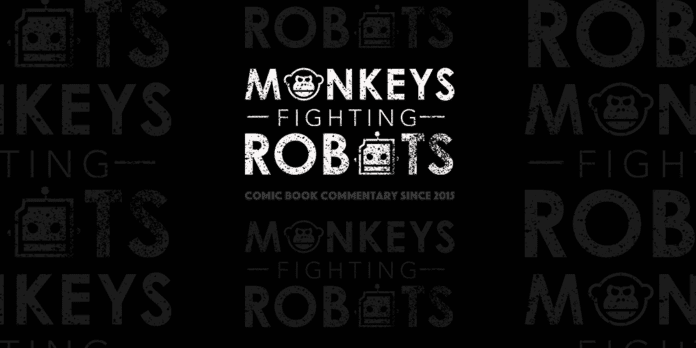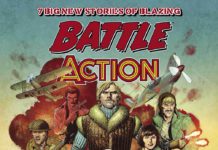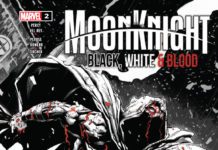Rarely does a live action comic book adaption live up to its source material, and it’s even rarer for it to be better. Either the story is bastardized beyond comparison (X-Men: Days of Future Past), or its an adaption in name only, with a completely original and incomparable story (Avengers: Age of Ultron). This doesn’t necessarily make the adaptions bad; it’s just hard to compare them to the decades of source material they pulled from. That is why it’s refreshing to see an adaption based on a newer character; it’s easier to look at the handful of books they’ve appeared in and say, “They got this right/they got this wrong.” Enter Jessica Jones.
Quick history lesson: Jessica Jones was created in 2001 by Brian Michael Bendis and first appeared in her own series, Alias, which ran for 28 issues. She then went on to star/appear in The Pulse, New Avengers, and other various Avengers-based books, where she changed and grew from a loner to part of an ensemble cast. However, the recent Netflix show Jessica Jones is adapted purely from the Alias title, so that’s what it will be compared to in the history books. And history will show that not only does the adaption live up to its inspiration, but it’s one of those one-in-a-million times where it exceeds it.
Alias was Marvel’s first title under its MAX imprint, which was its (short lived) foray into R-rated content. Unfortunately, that’s all that the Jessica Jones character seemed to be: Marvel’s vehicle to deliver curse words and have sex with Scott Lang (this is all before Disney bought Marvel and turned him into a summer blockbuster). There was no real depth to her, or to the stories. The first 23 issues were just interchangeable P.I. cases, followed by a two-part generic origin tale. The stories could be interesting, but they didn’t develop Jessica’s character in any way other than saying she was a disgraced former superhero with trust issues. That’s a great premise, but it gets old after 20+ issues.
Luckily, issue 24 kicked off an arc called “Purple” (fans of the show know where this is going). It chronicled her fall from grace at the hands of the manipulative Zebediah Killgrave, the Purple Man. Granted, it still wasn’t amazing. Bendis wrote in some strange meta dialogue that didn’t work. The ending felt somewhat rushed and whimpering. But the story was rock solid. It was intense, and dark. It went to depths that even the TV show doesn’t go.

Thankfully, “Purple” is what the showrunners chose to run with for Jessica Jones. Episode one has Jessica learn that Kilgrave (new spelling, same evil) has returned, and she must decide whether to face him or run. Spoiler alert: she faces him. Otherwise it would be a very boring show. But before that, all of her fear, conflict, and failure to bury her past is skillfully put into this pilot. Jessica Jones takes one episode to accomplish what took Alias 23 issues, and does it better. The rest of the season is dedicated to her working to defeat Kilgrave, and overcoming her past instead of running from it.
Because it dedicates more time to what matters, Jessica Jones is able to develop Jessica into a deeper, more complex character. It actually shows her PTSD and her breakdowns, instead of just having her talk about her trouble. The viewer sees a gradual transition from a Jessica who wants to be invisible into a reluctant hero, starting with her decision in the first episode to help Kilgrave’s latest victim. Plus, she confronts her nemesis multiple times before their final “battle.” The time they spend together in her childhood home is amazing. There is all this time spent building on their relationship, and seeing Jessica strengthen her resolve each time. It’s all so much more well done than Alias, which filled 27 issues with whining and running, leading up to an extremely anti-climactic ending.
Best of all, the show doesn’t rely on its adult theme as a crutch, like the book did. The first word in Alias is the bad one that rhymes with “duck.” It’s the very first word, and then it’s repeated several times to really drive home the fact that they’re allowed to say it. Meanwhile, Jessica Jones doesn’t use it at all. There is swearing in the show, and some of it may be superfluous, but it’s not the crux of the dialogue. Some of the writing in Alias felt like it was there just to surround the swear words. The same goes for the sex scenes. There are repeated sex scenes in Alias, but only one heavy sex scene comes to mind from the whole season of Jessica Jones.
This isn’t meant to sound prudish. There’s nothing wrong with swearing or sex in a story, so long as it doesn’t become gratuitous. When Jessica Jones has a sex scene, it says, “Look at this well done scene, reflecting two characters realizing that they don’t have to hold back for the first time in recent memory, and unleashing years of built up tension.” When Alias did it, it said, “Look, she’s having sex with Ant-Man! Isn’t that crazy?!” This makes sense though, considering what audiences expect from different mediums. Sex and swearing were new to Marvel comics, so they took advantage of the gimmick, and readers were captivated at the time. But viewers are used to sex and swearing in TV by now, so the story still has to be strong to keep their interest.

In all fairness, Alias‘ simplicity does give it a little credit compared to Jessica Jones. The show gets derailed at times with side stories and characters (Nuke played no role, other than distracting the main characters). Of course, the derailments had their place: they were there to build on the greater story running through the Marvel/Netflix shows leading up to The Defenders. But Alias deserves to get at least one point of credit here, and strictly considering Jessica’s story, it did a better job staying focused.
This comparison has come down pretty hard on Alias, referring to drawn out, shallow storytelling. Don’t be too dissuaded to pick it up; it’s still a worthwhile read, and a landmark in the Modern Age of comics. It’s only that Jessica Jones‘ release has shown audiences how good of a story it could have been from the start, and the book’s problems are much more apparent.
That’s what this all comes down to: story. It’s impossible to compare a comic and its adaption on any other bases. Krysten Ritter’s acting can’t be compared to anything in Alias; Michael Gaydos’ artwork can’t be compared to anything in Jessica Jones. The only comparison is which medium told the story better. Jessica Jones did that, hands down.








